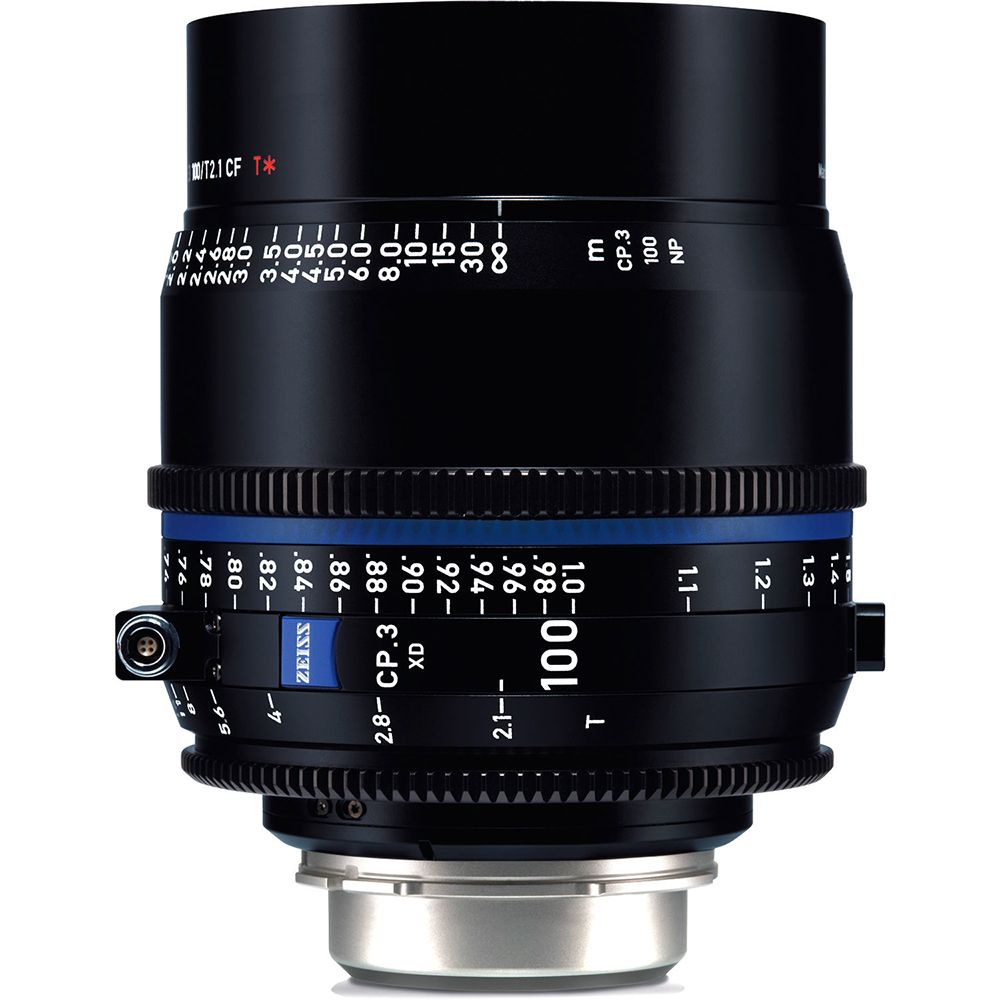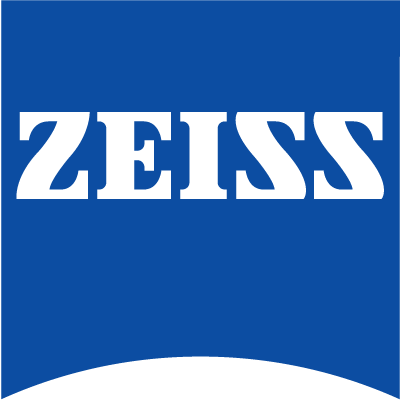ZEISS's CP.3 Compact Prime Lenses, building on the success of the well-regarded CP.2 lenses, offer the same full-frame sensor coverage and classic ZEISS look in an updated form-factor and with improved mechanics and lens coatings. This lens also includes the new eXtended Data connections that transmit essential lens metadata through both a Cooke /i interface on the mount itself and a 4-pin LEMO connection on the lens body.
The 100mm Compact Prime lens is derived from the same classic optical formula as the preceding CP.2 variant. The 100mm Compact Prime lens shares the same physical length as the 135mm CP.3 lens while maintaining identical focus and iris gear positioning with the entire set of CP.3 lenses, relative to the mount. The 100mm Compact Prime lens, like all CP.3 lenses, share the same 95mm front diameter. Similar physical attributes across the lens line makes fitting lens accessories such as matte boxes, follow focuses, lens supports, and lens control motors easier and less time consuming.
An additional feature handed down from the preceding CP.2 lenses is the interchangeable mounts. This lens comes with a PL mount installed. If you wish to fit your CP.3 lens to a different camera, the lens mount can be swapped by the user for a different mount, available separately. The 14-bladed iris from the CP.2 has also been incorporarted into the new lens design, giving you the same bokeh in your images as the previous model.
Zeiss eXtended Data (XD) Technology combines Cooke's /i lens metadata protocol with Zeiss-specific datasets for each lens enables focal length, focus position, iris setting, and depth-of-field calculation metadata transmission to a wide range of cameras and production equipment. All information is transmitted in real-time through the 12-o'clock positioned pins on the PL mount and 4-pin LEMO port on the barrel of the lens and is captured for every individual frame. The lens data can be leveraged for accurate focus pulling when combined with a rangefinder or recorded alongside the video footage and applied in post-production. In particular, the recording of Zeiss-specific datasets enable DITs using Pomfort or DaVinci Resolve software to analyze recorded footage to remove distortion and shading in post-production.
One advantage to the Zeiss eXtended Data (XD) Technology system lies in the fact that a production team can save the time in pre-production normally spent mapping out each lens's distortion manually with focus charts. The eXtended Data workflow is both more precise and quicker saving both time and money on productions, especially ones that plan on using VFX.
| Focal Length |
100mm |
| Lens Mount |
ARRI PL |
| Lens Format Coverage |
Full Frame |
| Image Circle |
46.3 mm |
| Maximum Aperture |
T2.1 |
| Minimum Aperture |
T22 |
| Minimum Focus Distance |
From : 2.5" / 70 cm |
| Diaphragm Blades |
15 |
| Gear MOD & Pitch |
Focus: 0.8 MOD / 32 Pitch
Iris: 0.8 MOD / 32 Pitch |
| Front Diameter |
95 mm |
| Focus Scales |
Metric |
| Focus Rotation |
300° |
| Electronic Communication |
Yes |
| Image Stabilization |
No |
| System Connection |
1 x LEMO 4-Pin Data |
| Lens Support |
Lens Support Foot with 3/8"-16 Mounting Thread |
| Length |
4.98" / 126.5 mm |
| Weight |
2.2 lb / 1.01 kg |


